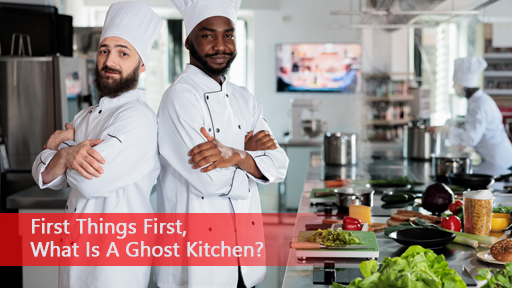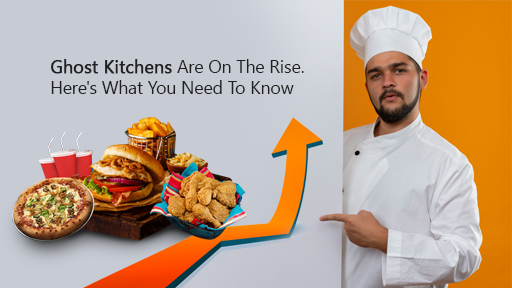Ghost Kitchens Are On The Rise. Here's What You Need To Know
Shanelle | September 01, 2020
There’s no doubt that this pandemic has challenged business owners in all industries to reevaluate their modes of operation. From retail to gyms, hair salons to restaurants--business leaders have been forced to take a step back and see how they can continue to be innovative without jeopardizing the health and safety of their patrons and staff. With over 60% of Americans ordering takeout at least once a week, it’s imperative arguably now more than ever for restaurant owners and businessmen in the food industry in particular to rethink how they do business. And if and how they’ll keep their existing business model or expand into new and different territories. One of those territories being “ghost kitchens.” In this article, we’ll break down what exactly a ghost kitchen is, some pros and cons that come with it, and what this could potentially mean for your business.
First Things First, What Is A Ghost Kitchen?

Ghost Kitchens, also commonly referred to as virtual kitchens, are facilities that are set up for operation for the sole purpose of producing delivery-only meals. Due to the influx of at-home delivery ordering, ghost kitchens allow the space for multiple meals from multiple brands to be made in order to meet the demand of the ever-increasing online ordering world. They contain the proper kitchen equipment necessary for meal preparation but they don’t host an area for dine-in patrons. Some ghost kitchens do, however allow for guests to walk up and order but its most locations are for delivery-only. Ghost kitchens also allow for the creation of a new virtual brand or an extension of a pre-existing one. In a recent article for Roaming Hunger, celebrity chef Eric Greenspan expounds a bit more on the concept.“A ghost kitchen is where virtual brands are produced without a brick and mortar location,” Greenspan explains. “They’re facilities that are made solely for producing virtual brands. Some kitchens focus on multiple brands of one item like pizza or burgers. It’s a virtual real estate game that increases your chance of capturing a customer looking for a specific dish.” After you're set up, you can then get your brand onto third-party apps like UberEats and DoorDash and begin serving customers.
What Are The Pros & Cons?
One of the major pros for establishing ghost kitchens is that it significantly decreases the cost of operating expenses. Think about it. There are no real lights to turn on, an entire building to lease, no giant staff to pay. You stand to gain more than lose with this model as opposed to a regular brick and mortar storefront. Restaurant Business Online put it this way: “Operators can benefit by maximizing the added efficiency of the ghost kitchen model to reduce labor and cut costs. Simplifying the menu and optimizing recipes to better suit delivery can expedite prep and ensure quality. Creating options for consumers to upgrade their dish that boost check averages without adding time and labor in the kitchen can be a great way to increase profits, too.” On the flipside there are definitely things you’re missing out on with this business model. One of them being that solely reliant on the foot traffic that comes with placing yourself in highly populated areas and you could potentially miss out on the walk-in diners that would usually come in with a standard restaurant. The other con is that while your menu offering would be specialized and singular to that particular kitchen--you don’t have the full range to produce an entire menu. Which means some consumers may miss out on some of their favorite dishes simply because of the lack of bandwidth. However, ghost kitchens are paramount for meeting the high-demands of customers in this personalized, microwave, era. It’s up to each individual to literally count up the cost to assess whether or not this is a smart move for your business.
So What Does This Mean?

